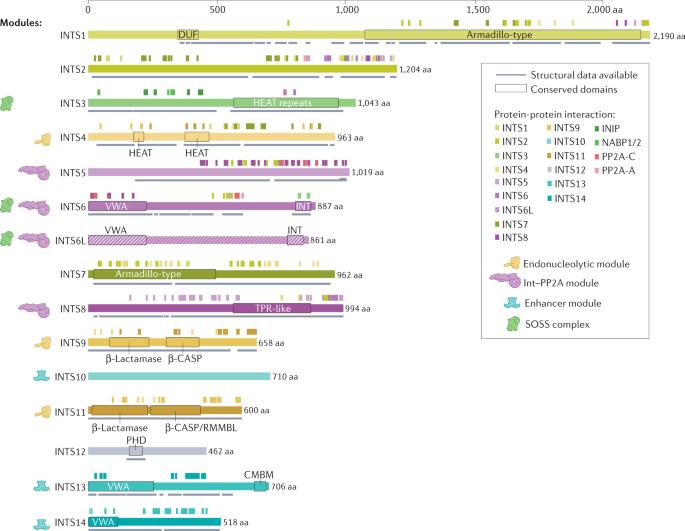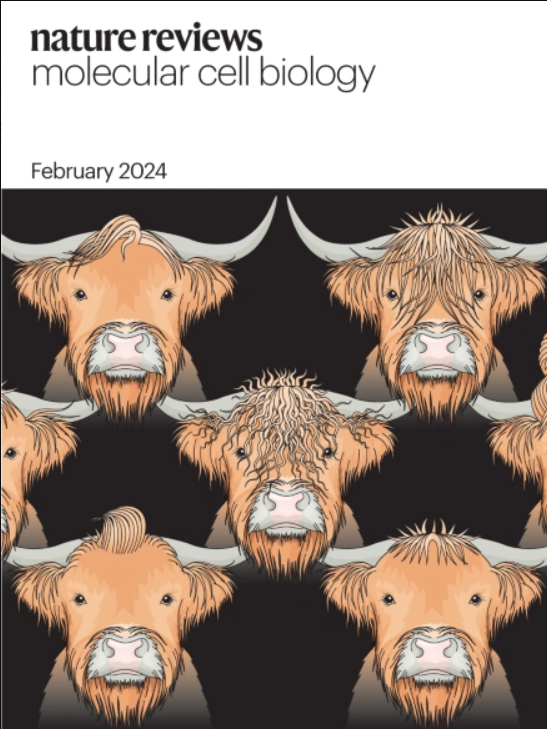Genomic regulation of transcription and RNA processing by the multitasking Integrator complex
IF 90.2
1区 生物学
Q1 CELL BIOLOGY
引用次数: 19
Abstract
In higher eukaryotes, fine-tuned activation of protein-coding genes and many non-coding RNAs pivots around the regulated activity of RNA polymerase II (Pol II). The Integrator complex is the only Pol II-associated large multiprotein complex that is metazoan specific, and has therefore been understudied for years. Integrator comprises at least 14 subunits, which are grouped into distinct functional modules. The phosphodiesterase activity of the core catalytic module is co-transcriptionally directed against several RNA species, including long non-coding RNAs (lncRNAs), U small nuclear RNAs (U snRNAs), PIWI-interacting RNAs (piRNAs), enhancer RNAs and nascent pre-mRNAs. Processing of non-coding RNAs by Integrator is essential for their biogenesis, and at protein-coding genes, Integrator is a key modulator of Pol II promoter-proximal pausing and transcript elongation. Recent studies have identified an Integrator-specific serine/threonine-protein phosphatase 2A (PP2A) module, which targets Pol II and other components of the basal transcription machinery. In this Review, we discuss how the activity of Integrator regulates transcription, RNA processing, chromatin landscape and DNA repair. We also discuss the diverse roles of Integrator in development and tumorigenesis. Integrator is the only metazoan-specific RNA polymerase II (Pol II)-associated large multisubunit complex. Processing of non-coding RNAs by Integrator is essential for their biogenesis, and, at protein-coding genes, Integrator regulates Pol II promoter-proximal pausing and elongation. Consequently, Integrator has diverse roles in development and tumorigenesis.

多任务整合器复合体对转录和 RNA 处理的基因组调控
在高等真核生物中,蛋白质编码基因和许多非编码 RNA 的微调激活都围绕着 RNA 聚合酶 II(Pol II)的调控活动。Integrator复合体是与Pol II相关的大型多蛋白复合体中唯一具有元古动物特异性的复合体,因此多年来一直未得到充分研究。整合子由至少 14 个亚基组成,这些亚基被分成不同的功能模块。核心催化模块的磷酸二酯酶活性与多种 RNA 共同转录,其中包括非编码长 RNA(lncRNA)、U 小核 RNA(U snRNA)、PIWI 交互 RNA(piRNA)、增强子 RNA 和新生 pre-mRNA。在蛋白编码基因中,Integrator 是 Pol II 启动子近端暂停和转录本延伸的关键调节器。最近的研究发现了一个 Integrator 特异性丝氨酸/苏氨酸蛋白磷酸酶 2A (PP2A) 模块,该模块靶向 Pol II 和基础转录机制的其他成分。在本综述中,我们将讨论整合子的活性如何调控转录、RNA 处理、染色质景观和 DNA 修复。我们还讨论了整合子在发育和肿瘤发生中的各种作用。Integrator是唯一一种与RNA聚合酶II(Pol II)相关的大型多亚基复合体。Integrator 对非编码 RNA 的处理对其生物发生至关重要,而在蛋白编码基因中,Integrator 可调节 Pol II 启动子近端暂停和伸长。因此,Integrator 在发育和肿瘤发生过程中发挥着多种作用。
本文章由计算机程序翻译,如有差异,请以英文原文为准。
求助全文
约1分钟内获得全文
求助全文
来源期刊
CiteScore
173.60
自引率
0.50%
发文量
118
审稿时长
6-12 weeks
期刊介绍:
Nature Reviews Molecular Cell Biology is a prestigious journal that aims to be the primary source of reviews and commentaries for the scientific communities it serves. The journal strives to publish articles that are authoritative, accessible, and enriched with easily understandable figures, tables, and other display items. The goal is to provide an unparalleled service to authors, referees, and readers, and the journal works diligently to maximize the usefulness and impact of each article. Nature Reviews Molecular Cell Biology publishes a variety of article types, including Reviews, Perspectives, Comments, and Research Highlights, all of which are relevant to molecular and cell biologists. The journal's broad scope ensures that the articles it publishes reach the widest possible audience.

 求助内容:
求助内容: 应助结果提醒方式:
应助结果提醒方式:


